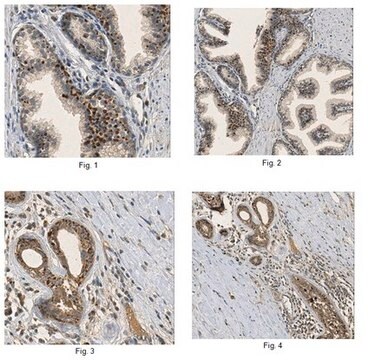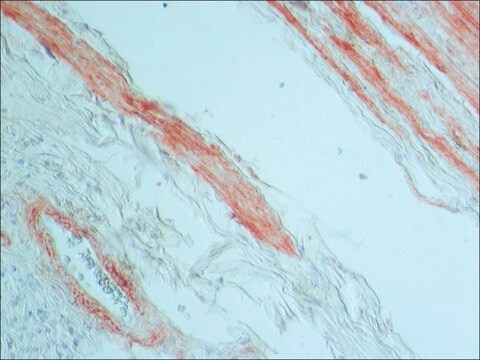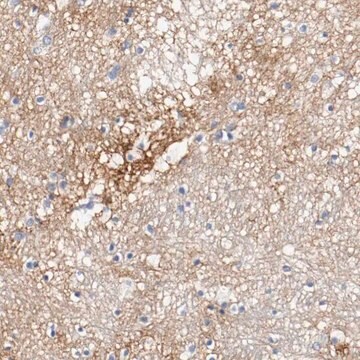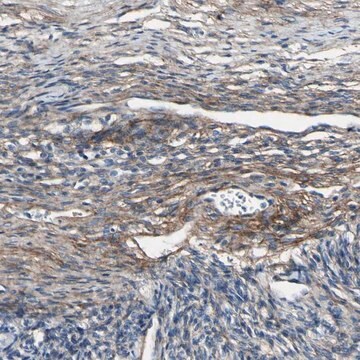ABS1593
Anti-sFRP-1 Antibody
from rabbit
Sinonimo/i:
Secreted frizzled-related protein 1, FRP-1, SARP-2, Secreted apoptosis-related protein 2, sFRP-1
About This Item
Prodotti consigliati
Origine biologica
rabbit
Livello qualitativo
Forma dell’anticorpo
purified antibody
Tipo di anticorpo
primary antibodies
Clone
polyclonal
Reattività contro le specie
human, mouse
tecniche
immunohistochemistry: suitable
neutralization: suitable
western blot: suitable
N° accesso NCBI
N° accesso UniProt
Condizioni di spedizione
ambient
modifica post-traduzionali bersaglio
unmodified
Informazioni sul gene
human ... SFRP1(6422)
Descrizione generale
Specificità
Immunogeno
Applicazioni
Neutralizing Analysis: A representative lot, in combination with recombinant Wtn5a and an anti-DKK1 antibody, increased migration and mammosphere formation of EpCAM-positive (EPC+) human mammary epithelial cells (MECs) (Scheel, C., et al. (2011). Cell. 145(6):926 940).
Neutralizing Analysis: A representative lot enhanced the formation of TRACP+ mutinucleated and mononucleated cells from co-cultured murine splenic and primary osteoblastic cells upon PGE2 and 1 ,25 (OH)2D3 stimulatation (Häusler, K.D., et al. (2004). J. Bone Miner. Res. 19(11):1873-1881).
Note: Detection of endogenous sFRP-1 in whole cell lysates or tissue samples is difficult without an enrichment step prior to immunoblotting (e.g. by immunoprecipitation or heparin affinity chromatography).
Signaling
Qualità
Western Blotting Analysis: 1 µg/mL of this antibody detected in 10 ng of mammalian expressed, secreted human sFRP-1.
Descrizione del bersaglio
Stato fisico
Stoccaggio e stabilità
Handling Recommendations: Upon receipt and prior to removing the cap, centrifuge the vial and gently mix the solution. Aliquot into microcentrifuge tubes and store at -20°C. Avoid repeated freeze/thaw cycles, which may damage IgG and affect product performance.
Altre note
Esclusione di responsabilità
Non trovi il prodotto giusto?
Prova il nostro Motore di ricerca dei prodotti.
Codice della classe di stoccaggio
12 - Non Combustible Liquids
Classe di pericolosità dell'acqua (WGK)
WGK 2
Punto d’infiammabilità (°F)
Not applicable
Punto d’infiammabilità (°C)
Not applicable
Certificati d'analisi (COA)
Cerca il Certificati d'analisi (COA) digitando il numero di lotto/batch corrispondente. I numeri di lotto o di batch sono stampati sull'etichetta dei prodotti dopo la parola ‘Lotto’ o ‘Batch’.
Possiedi già questo prodotto?
I documenti relativi ai prodotti acquistati recentemente sono disponibili nell’Archivio dei documenti.
Il team dei nostri ricercatori vanta grande esperienza in tutte le aree della ricerca quali Life Science, scienza dei materiali, sintesi chimica, cromatografia, discipline analitiche, ecc..
Contatta l'Assistenza Tecnica.








